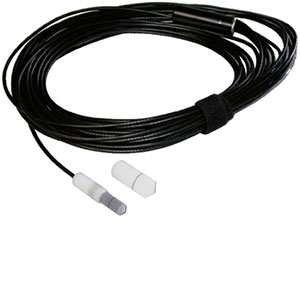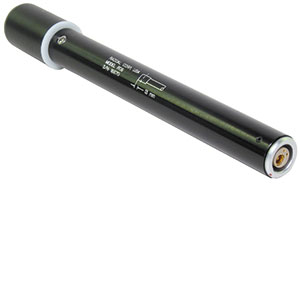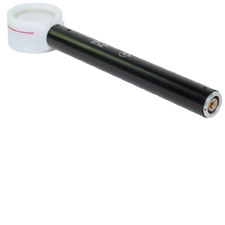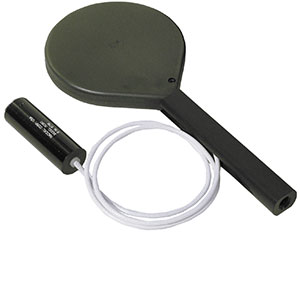by Vicky Chen | Nov 1, 2016 | Software
 The Accu-Gold digitizer and sensors are available with the “Accu-Gold” user software that enables simple measurement as well as rich visualization of the captured data.
The Accu-Gold digitizer and sensors are available with the “Accu-Gold” user software that enables simple measurement as well as rich visualization of the captured data.
For those applications requiring integration of Accu-Gold x-ray measurements with other automated equipment, Radcal provides an application programming interface (“API”). The Accu-Gold API allows software developers to create their own applications.
The API is a Microsoft .Net 4 DLL compatible with most mainstream development languages for the PC platform such as Visual C++, C#, VB.Net, PowerShell, and LabView. Contact Radcal for software licensing terms and conditions.
by Vicky Chen | Oct 8, 2016 | RC Chambers
 This high dose rate chamber provides an excellent response at therapy and other high energy, high dose rate applications. The fully guarded chamber is mounted at the end of a 12 m low noise triax cable.
This high dose rate chamber provides an excellent response at therapy and other high energy, high dose rate applications. The fully guarded chamber is mounted at the end of a 12 m low noise triax cable.
by Vicky Chen | Oct 7, 2016 | RC Chambers
 The RC6 is an unsealed cylindrical 6 cm3, general-purpose ion chamber, designed for general purpose x-ray measurements. It has excellent energy response throughout the diagnostic energy and with an appropriate build-up cap(optional), the energy range can be extended to 60Co.
The RC6 is an unsealed cylindrical 6 cm3, general-purpose ion chamber, designed for general purpose x-ray measurements. It has excellent energy response throughout the diagnostic energy and with an appropriate build-up cap(optional), the energy range can be extended to 60Co.
by Vicky Chen | Oct 6, 2016 | RC Chambers
 The RC6M is an unsealed parallel plate 6 cm3 ion chamber specifically designed for low-energy x-ray measurements. It has a thin entrance window and is suitable for x-ray energies in the range of 10 to 40 keV.
The RC6M is an unsealed parallel plate 6 cm3 ion chamber specifically designed for low-energy x-ray measurements. It has a thin entrance window and is suitable for x-ray energies in the range of 10 to 40 keV.
by Vicky Chen | Oct 5, 2016 | RC Chambers
 The RC60 is an unsealed thin cross-section, parallel plate 60 cm3 ion chamber suitable for x-ray beam measurements with low to intermediate dose rates. It has excellent energy response throughout the diagnostic energy range and with the application of appropriate build-up materials, the energy range can be extended to 60Co.
The RC60 is an unsealed thin cross-section, parallel plate 60 cm3 ion chamber suitable for x-ray beam measurements with low to intermediate dose rates. It has excellent energy response throughout the diagnostic energy range and with the application of appropriate build-up materials, the energy range can be extended to 60Co.
 The Accu-Gold digitizer and sensors are available with the “Accu-Gold” user software that enables simple measurement as well as rich visualization of the captured data.
The Accu-Gold digitizer and sensors are available with the “Accu-Gold” user software that enables simple measurement as well as rich visualization of the captured data.
 This high dose rate chamber provides an excellent response at therapy and other high energy, high dose rate applications. The fully guarded chamber is mounted at the end of a 12 m low noise triax cable.
This high dose rate chamber provides an excellent response at therapy and other high energy, high dose rate applications. The fully guarded chamber is mounted at the end of a 12 m low noise triax cable. The RC6 is an unsealed cylindrical 6 cm3, general-purpose ion chamber, designed for general purpose x-ray measurements. It has excellent energy response throughout the diagnostic energy and with an appropriate build-up cap(optional), the energy range can be extended to 60Co.
The RC6 is an unsealed cylindrical 6 cm3, general-purpose ion chamber, designed for general purpose x-ray measurements. It has excellent energy response throughout the diagnostic energy and with an appropriate build-up cap(optional), the energy range can be extended to 60Co. The RC6M is an unsealed parallel plate 6 cm3 ion chamber specifically designed for low-energy x-ray measurements. It has a thin entrance window and is suitable for x-ray energies in the range of 10 to 40 keV.
The RC6M is an unsealed parallel plate 6 cm3 ion chamber specifically designed for low-energy x-ray measurements. It has a thin entrance window and is suitable for x-ray energies in the range of 10 to 40 keV. The RC60 is an unsealed thin cross-section, parallel plate 60 cm3 ion chamber suitable for x-ray beam measurements with low to intermediate dose rates. It has excellent energy response throughout the diagnostic energy range and with the application of appropriate build-up materials, the energy range can be extended to 60Co.
The RC60 is an unsealed thin cross-section, parallel plate 60 cm3 ion chamber suitable for x-ray beam measurements with low to intermediate dose rates. It has excellent energy response throughout the diagnostic energy range and with the application of appropriate build-up materials, the energy range can be extended to 60Co.